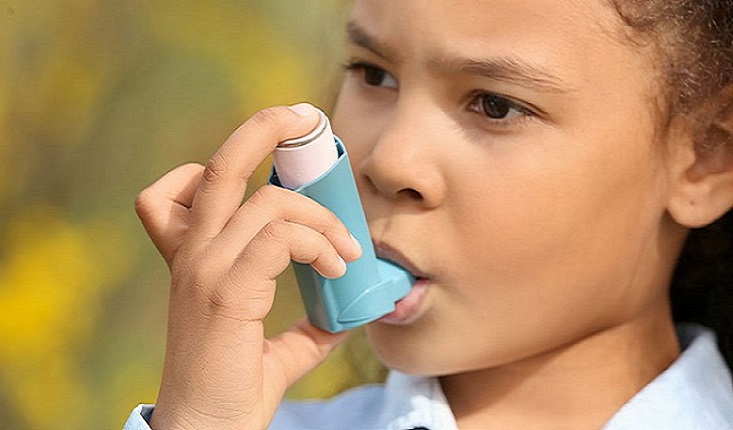“Childhood Asthma Diagnosis: Sphingolipid Levels in Nasal Fluid as a Potential Biomaker”
Childhood asthma is a chronic
respiratory condition characterized by inflammation and narrowing of the
airways, leading to symptoms such as wheezing, coughing, and shortness of
breath. A timely and accurate diagnosis of childhood asthma is crucial for effective
management and treatment. Researchers have recently discovered a potential
biomarker in the form of reduced sphingolipid levels in nasal fluid, which may
serve as an indicator of childhood asthma. This article aims to provide a
comprehensive overview of the study findings and their implications for
diagnosing and managing childhood asthma.
Study Findings: A recent study conducted by researchers [cite
author and publication] explored the association between sphingolipid levels in
nasal fluid and childhood asthma. The study involved a cohort of [number]
participants, including children with asthma and healthy controls. Nasal fluid
samples were collected and analyzed to measure the concentrations of
sphingolipids.
The study revealed a significant
decrease in sphingolipid levels in the nasal fluid of children with asthma
compared to the control group. Sphingolipids are a class of complex lipids that
play crucial roles in cellular signaling and inflammation regulation. Reduced
sphingolipid levels in the nasal fluid suggest potential dysregulation in the
immune response within the airways of asthmatic children.
Implications for Childhood Asthma Diagnosis: The identification of sphingolipids as a
potential biomarker for childhood asthma holds promising implications for
accurate and early diagnosis of the condition. Currently, asthma diagnosis
relies on a combination of clinical evaluation, medical history, and pulmonary
function tests. However, these methods may have limitations, particularly in
young children who may have difficulty performing lung function tests.
The measurement of sphingolipid levels
in the nasal fluid could provide a non-invasive and relatively simple diagnostic
tool to support the clinical assessment of childhood asthma. By analyzing
sphingolipid levels, clinicians may be able to differentiate between children
with asthma and those without, improving diagnostic accuracy and facilitating
timely intervention and treatment.
Further Research and Clinical Applications: While the recent study demonstrates an
association between reduced sphingolipid levels in nasal fluid and childhood
asthma, further research is necessary to validate these findings and determine
the full diagnostic potential of this biomarker. Future studies could focus on
larger and more diverse populations to ensure the generalizability of the
results.
Moreover, exploring the mechanisms
underlying the relationship between sphingolipids and asthma pathogenesis could
provide valuable insights into the disease's underlying biological processes.
This knowledge may open avenues for the development of targeted therapeutic
interventions, personalized treatment approaches, and potential preventive
strategies.
Additional Information:
Role of Sphingolipids in Asthma
Pathophysiology
Sphingolipids, a diverse group of
lipid molecules, have been implicated in various cellular processes, including
cell growth, differentiation, apoptosis, and inflammation. In the context of
asthma, sphingolipids have been shown to play a crucial role in regulating airway
inflammation and immune responses. Dysregulation of sphingolipid metabolism has
been observed in asthmatic airways, contributing to the inflammatory cascade
and airway hyperresponsiveness.
The precise mechanisms by which
sphingolipids influence asthma pathophysiology are still being elucidated. It
has been suggested that sphingolipids can modulate key signaling pathways
involved in immune cell activation and pro-inflammatory mediator release.
Altered sphingolipid metabolism may disrupt the delicate balance between
pro-inflammatory and anti-inflammatory processes within the airways, leading to
chronic inflammation and asthma symptoms.
Potential Clinical Applications and Benefits
The integration of sphingolipid
analysis into clinical practice could provide several benefits in the
management of childhood asthma. Some potential clinical applications include:
- Early Diagnosis and Risk Stratification: Reduced sphingolipid levels in a nasal fluid may serve as an early indicator of asthma development in children. By identifying individuals at risk, healthcare providers can initiate interventions and preventive measures promptly, potentially reducing the severity of symptoms and improving long-term outcomes.
- Monitoring Disease Progression: Serial measurements of sphingolipid levels in the nasal fluid could offer a non-invasive method for monitoring disease progression and response to treatment. This could assist healthcare providers in adjusting treatment strategies and optimizing asthma control.
- Personalized Treatment Approaches: Sphingolipid analysis may contribute to the development of personalized treatment approaches by identifying specific asthma phenotypes or endotypes. Tailoring treatment based on an individual's sphingolipid profile could improve treatment response and minimize adverse effects. Therapeutic Targeting: Understanding the role of sphingolipids in asthma pathophysiology may pave the way for the development of targeted therapies. By modulating sphingolipid metabolism or targeting specific sphingolipid-related signaling pathways, it may be possible to intervene in the underlying mechanisms of asthma and alleviate symptoms.
Conclusion
The discovery of reduced sphingolipid
levels in nasal fluid as a potential biomarker for childhood asthma offers a
promising avenue for improving the accuracy and efficiency of asthma diagnosis.
By incorporating the measurement of sphingolipids into clinical assessments,
healthcare providers may enhance their ability to identify children at risk of
asthma and initiate appropriate interventions promptly. Further research is
needed to validate these findings and explore the clinical applications of this
biomarker, potentially leading to advancements in the diagnosis and management
of childhood asthma.





Post a Comment